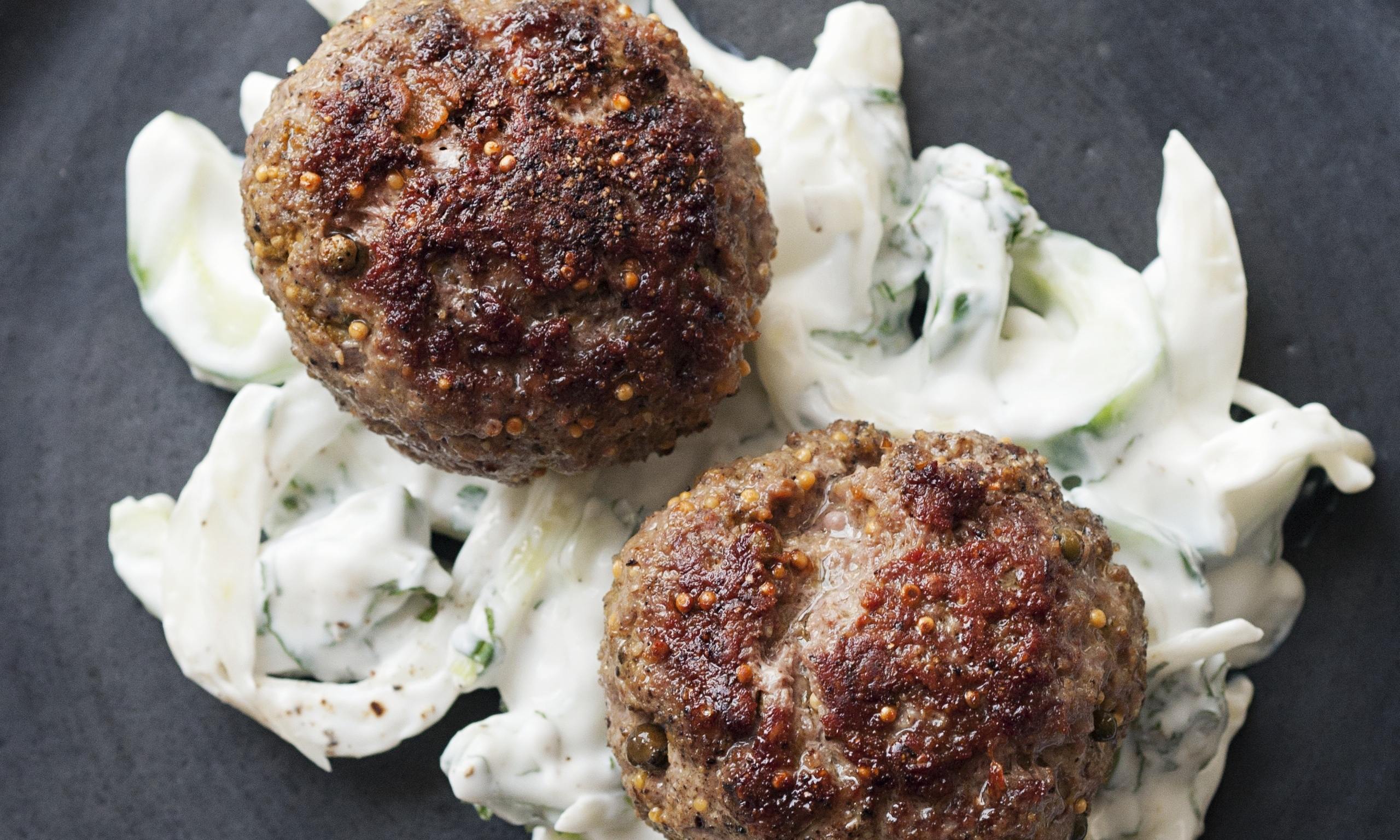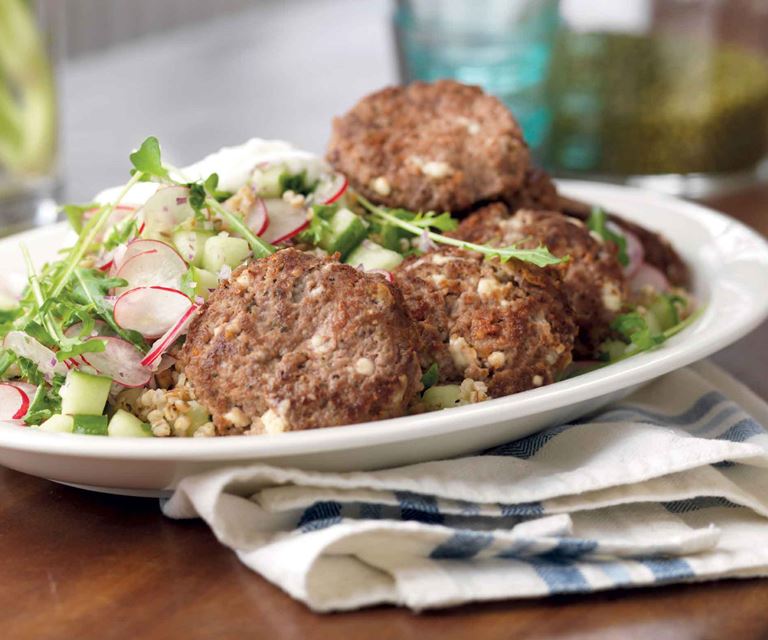Prepare to embark on a culinary adventure with our comprehensive guide to crafting the perfect lamb patty. Whether you’re a seasoned grill master or a novice in the kitchen, this recipe will empower you to create mouthwatering patties that will tantalize your taste buds and leave a lasting impression on your dining companions.
From selecting the finest ingredients to mastering the art of seasoning and cooking, we’ll guide you through every step of the process, ensuring that your lamb patties become a staple in your culinary repertoire. So, gather your ingredients, fire up the grill, and let’s delve into the world of lamb patty perfection.
Ingredients
Lamb patty recipes typically call for a combination of ground lamb, seasonings, and binders to create a flavorful and cohesive patty.
The choice of ingredients can vary depending on personal preferences and cultural influences. Here’s a comprehensive list of common ingredients used in lamb patty recipes:
Meat
- Ground lamb: The primary ingredient, typically made from lamb shoulder or leg.
- Beef: Sometimes added to the lamb for a more robust flavor and texture.
Seasonings
- Salt and pepper: Essential seasonings for enhancing the meat’s flavor.
- Cumin: A warm and earthy spice commonly used in Middle Eastern cuisine.
- Paprika: Adds a vibrant color and a slightly sweet and smoky flavor.
- Garlic powder: Imparts a savory and aromatic flavor.
- Onion powder: Adds a subtle sweetness and depth of flavor.
- Fresh herbs: Such as parsley, mint, or cilantro, can provide a refreshing and herbaceous flavor.
Binders
- Breadcrumbs: Absorb moisture and help bind the patty together.
- Eggs: Act as a binder and add moisture to the patty.
- Flour: Can be used to absorb excess moisture and add a bit of structure.
Grinding the Lamb

Grinding the lamb is a crucial step in creating juicy and flavorful patties. The grind size directly influences the texture and tenderness of the patties, so it’s important to achieve the optimal grind.
Grinding Techniques
- Coarse Grind: Creates patties with a rustic texture and a more pronounced lamb flavor. Ideal for burgers and meatballs.
- Medium Grind: Balances texture and flavor, producing patties that are both tender and flavorful. Suitable for most lamb patty applications.
- Fine Grind: Results in very smooth and tender patties. Best for lamb sliders or terrines.
Achieving the Optimal Grind Size
The optimal grind size depends on the desired texture and the type of patty being made. For most applications, a medium grind is recommended. To achieve this:
- Use a meat grinder with a medium-sized die (approximately 1/4 inch).
- Grind the lamb once through the grinder.
- If desired, grind the lamb a second time through a finer die (approximately 1/8 inch) for a smoother texture.
Remember, the grind size can be adjusted to suit personal preferences and the specific recipe.
Seasoning and Flavoring

Elevating the taste of lamb patties lies in the art of seasoning and flavoring. A harmonious blend of spices and herbs enhances the natural flavors, creating a symphony of taste buds.
The key to successful seasoning is balancing flavors, ensuring each ingredient complements the others without overpowering the delicate lamb flavor. Classic combinations like salt and pepper provide a solid foundation, while innovative blends can add a touch of intrigue.
Spice Blends
- Mediterranean: Oregano, thyme, rosemary, garlic, paprika
- Middle Eastern: Cumin, coriander, turmeric, cinnamon, nutmeg
- Indian: Garam masala, turmeric, chili powder, ginger, garlic
Forming the Patties
To craft delectable lamb patties, meticulous attention to shaping and handling is paramount. Proper formation ensures even cooking, prevents crumbling, and enhances the overall texture and flavor.
Gently gather a golf ball-sized portion of the seasoned lamb mixture and roll it between your palms to create a smooth, round shape. Flatten the patty to a uniform thickness of approximately 1 inch. This thickness allows for thorough cooking without overdrying the interior.
Handling Tips
- Handle the patties gently to avoid compacting the meat, which can lead to a tough texture.
- Use a light touch when flipping the patties to prevent breakage.
- If the patties start to stick to the grill, carefully loosen them with a spatula, avoiding piercing the meat.
Cooking Methods
Grilling, pan-frying, and oven-baking are all suitable methods for cooking lamb patties. Each method offers its own unique advantages and disadvantages, depending on the desired outcome and available resources.
Grilling
Grilling lamb patties imparts a smoky flavor and chargrilled texture. This method is ideal for outdoor cooking and allows for precise control over the level of doneness. However, grilling requires a well-maintained grill and constant attention to prevent overcooking or burning.
Pan-frying
Pan-frying is a versatile method that can be used on a stovetop or griddle. It allows for quick and even cooking, resulting in a crispy exterior and tender interior. However, pan-frying can create splatters and requires a non-stick pan or ample oil to prevent sticking.
Oven-baking
Oven-baking provides a more hands-off approach to cooking lamb patties. This method results in evenly cooked patties with a slightly crispy exterior and moist interior. However, oven-baking can take longer than other methods and may not produce the same level of caramelization as grilling or pan-frying.
Accompaniments and Sauces
Lamb patties are versatile dishes that pair well with a variety of accompaniments and sauces. Classic accompaniments include mashed potatoes, roasted vegetables, and grilled or steamed asparagus. Creative options could include quinoa pilaf, grilled pineapple slices, or a refreshing cucumber salad.
Sauces can elevate the flavor profile of lamb patties. A classic mint sauce, made with fresh mint, vinegar, and sugar, provides a refreshing contrast to the richness of the lamb. A flavorful tzatziki sauce, made with Greek yogurt, cucumber, garlic, and olive oil, adds a tangy and creamy element.
For a spicy kick, consider a harissa sauce, made with roasted red peppers, chili peppers, and cumin.
Garnishes
Garnishes play a crucial role in enhancing the presentation of lamb patties. Fresh herbs, such as mint or parsley, add a pop of color and freshness. A sprinkle of pomegranate seeds provides a vibrant contrast and a burst of tartness.
Toasted pine nuts or almonds add a nutty crunch and a touch of sophistication.
Closure
As we conclude our culinary exploration, we hope you feel confident and inspired to create your own exceptional lamb patties. Remember, the key to success lies in the harmonious balance of flavors, the meticulous attention to detail, and the unwavering pursuit of culinary excellence.
We encourage you to experiment with different seasonings and cooking methods to discover your unique preferences and create patties that reflect your personal style.
FAQ Corner
What is the ideal ratio of fat to meat for lamb patties?
A ratio of 80% lean meat to 20% fat is recommended for lamb patties. This ratio ensures a balance between flavor and texture, resulting in juicy and flavorful patties without being overly greasy.
How can I prevent my lamb patties from falling apart during cooking?
To prevent your lamb patties from falling apart, ensure that you handle them gently during forming and cooking. Avoid overworking the meat mixture, as this can result in tough patties. Additionally, use a binder such as breadcrumbs or eggs to help hold the patties together.
What are some classic accompaniments for lamb patties?
Classic accompaniments for lamb patties include mint jelly, tzatziki sauce, grilled vegetables, and feta cheese. These accompaniments complement the flavors of the lamb and enhance the overall dining experience.
